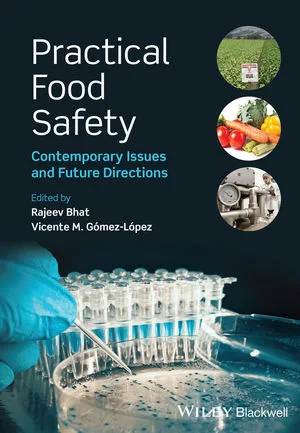A Closer Look at the Food Safety and Quality Issues Associated with High-Protein Snack Bars

Traditionally, what are some of the food safety or quality issues associated with high-protein snack bars?
Whey protein is natural and highly nutritious. It is derived from cows’ milk and is a popular choice in a range of food and beverage products across multiple categories. Thanks to its rich amino acid content, its use has been widespread for many years in the sports, infant and medical nutrition sectors. More recently, its appeal has extended to the mainstream, and whey protein is now incorporated into many day-to-day products, such as healthy snack bars, desserts and beverages. However, it is no secret that protein in general—including whey protein—can be difficult for formulators to work with. Depending on the source of the protein—animal or vegetable—there might be challenges related to taste, texture, quality and shelf life. But the popularity of protein among consumers, and its high nutritional value, means it’s worth the effort .
What has been tried to solve these problems in the past but hasn’t quite worked out?
At Arla Foods Ingredients’ headquarters in Denmark, we operate a modern application center staffed by a large team of highly skilled food technologists and engineers. There, we use scientific know-how—as well as some trial and error!—to develop specific whey protein ingredients for specific applications. As a result, we have a range of solutions that suit different products. For example, we have created whey protein ingredients that can be formulated into crystal clear beverages—something that’s really difficult to do with dairy proteins.
How does whey protein help solve these issues?
One of our most recent developments is a new whey protein solution that stays soft for at least a year, making it possible to crack the problem of hard protein bars. Nearly half of U.S. consumers (45%) purchased a high-protein bar in the past month, according to research.[1] However, due to textural deterioration during shelf life—a common issue with high-protein snack bars—it’s likely that many of the bars had lost their soft and chewy texture by the time they were eaten. To address this challenge, our technologists developed Lacprodan® SoftBar, a whey protein that ensures protein bars retain an indulgent cohesive (chewy) texture for 12 months or more in ambient storage conditions. Furthermore, the ingredient is all-natural and derived from cows’ milk—helping to keep the recipe simple and ensure consumer demand for clean and clear labels is met. To showcase the new protein solution, we created a 27 percent protein raspberry protein bar concept that is the perfect blueprint for sports nutrition applications that was unveiled late last year.
What other food products can whey protein be used in? Aso, what other safety- or quality-related issues can it help address?
To talk only about the challenges posed by whey protein doesn’t provide the full picture. In fact, whey has excellent functionality and can actually be the solution to some formulation difficulties. Take cottage cheese, for example. Arla Foods Ingredients has developed a whey protein ingredient that solves the long-standing problem of watery, low-fat cottage cheese. The protein is simply added to the dressing (cream) that is combined with the curds to make cottage cheese. It reacts with the salt in the dressing to create a thicker texture and a creamier end product. This eliminates the need for the stabilizers frequently used to enhance the quality of low-fat cottage cheese, which tends to have a runnier consistency than the standard version and is therefore more likely to require thickening. This is often done using starches and gums, which may mean sacrificing clean label status. Because the cream dressing containing the dairy protein is better quality, the proportion of curds required in the recipe can be reduced without any negative impact on product quality—enabling manufacturers to optimize their production costs and maximize profitability.
How has consumer need for clean labels helped or hurt the ingredient industry?
As a by-product of cheese-making, whey is available from many different sources; it is therefore important to verify the quality of that source. Whereas in the past it was enough for an ingredient to be considered ‘clean’ if it was derived from a natural source, shoppers are now raising more questions about the nature of that source. They understand that the raw material—milk—is natural. But, increasingly, they want to be reassured that it’s also wholesome and safe. They’re now asking: How was the product formulated? How was it processed? Food companies must be ready to answer those questions, but they can only do so if they source their whey ingredients from trustworthy sources. This is something that Arla Foods Ingredients is very aware of, so our whey proteins are derived only from milk produced by grass-fed cows using responsible farming standards, which means it is free from recombinant bovine somatotropin and pesticide and antibiotic residues. Furthermore, we use safe production methods that comply with non-genetically modified organism standards, which ensure no traces of heavy metals.
Has introducing this ingredient posed any formulation challenges?
Despite the traditional challenges presented by protein, formulating with whey need not be a difficult process. With the right ingredient solutions—targeting specific applications—whey protein can be an innovator’s dream and a gateway to creating some truly great new products that are perfectly in tune with the needs and desires of the millions of consumers today.
Inge Lise Povlsen is senior category manager for bakery & beverages at Arla Foods Ingredients, a 100 percent-owned subsidiary of Arla Foods.
Reference
1. Packaged Facts: 2016 Food Formulation and Ingredient Trends.
Looking for quick answers on food safety topics?
Try Ask FSM, our new smart AI search tool.
Ask FSM →








